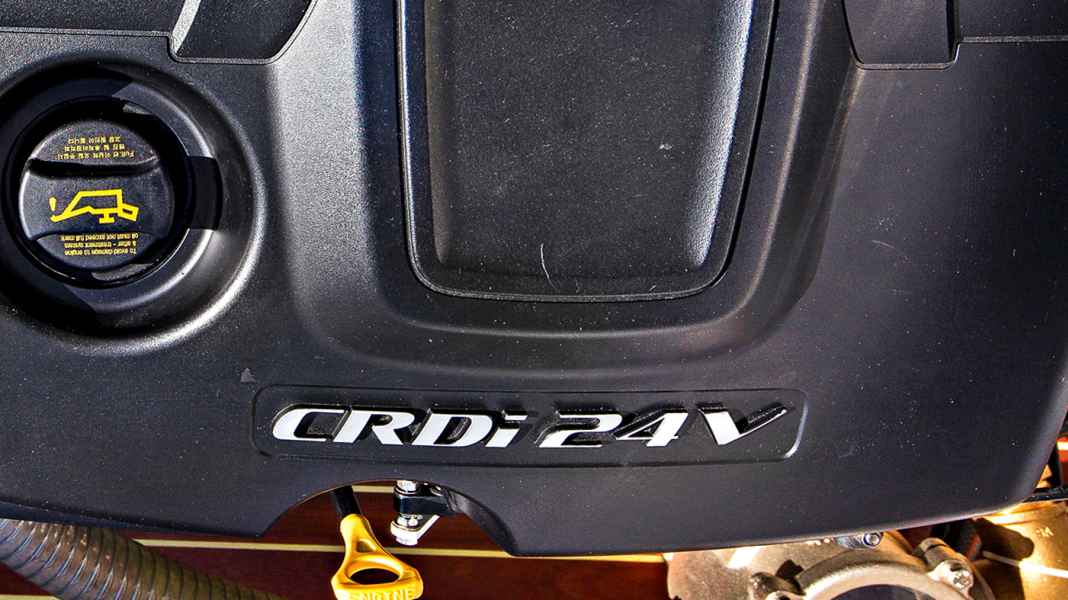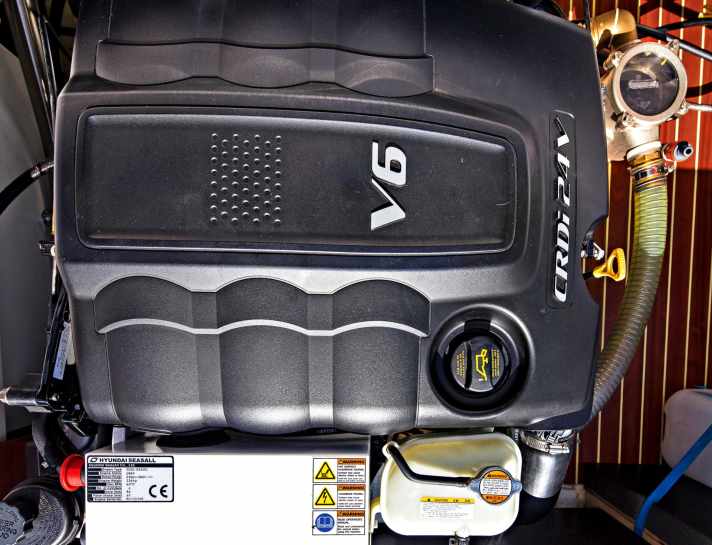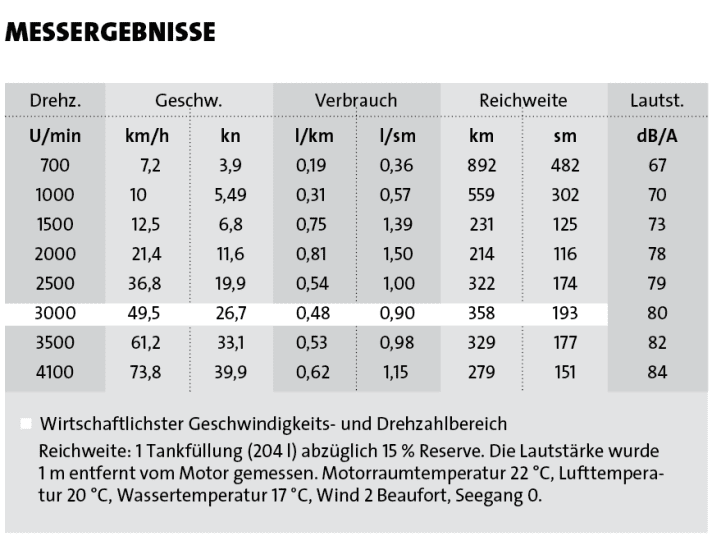
The fuel consumption of our boats is always an issue. The V-8 petrol engines, in particular, take a good gulp from the tank. At least if you "put the lever all the way on the table" or often hang water skiers, wakeboarders or tube riders behind the boat. This can quickly add up to 70 l/h to 100 l/h. Diesel engines are noticeably more economical in this respect. Their major disadvantage: the purchase price is sometimes twice as high as that of a petrol engine. This is evident both when buying a new boat outright and when "repowering" (replacing the old engine with a new one).
However, Hyundai Seasall shows that it can also be cheaper with its diesel engines. Our example is a V-6 engine that is incredibly similar to the Volkswagen Marine engine, which is now sold by Mercury Marine. When it comes to the pricing of the two engines, there is, as expected, an advantage for the diesel from Korea. For the Mercury diesel, the customer pays
39,602 euros more than the Hyundai, which costs 32,387 euros. If we now compare the petrol engine with roughly the same output (5.0 l MPI, 260 hp), a list price of 19,040 euros for the petrol engine reveals a price difference of around 13,000 euros for the Hyundai and more than 20,000 euros for the Mercury TDI*.
To demonstrate the power of the Hyundai engine, the Yachtzentrum Überlingen, Abigstr. 7, 88662 Überlingen, allowed us to take a test drive on Lake Constance. The test boat was a Regal 2250 Cuddy, which owner Walter Reimers equipped with an S250S and made available to the yacht centre on Lake Constance as a demonstration boat. He uses a Bravo III with twin propellers for propulsion, which optimises diesel power and torque in the water. Previously, the boat, which weighs around 1800 kg, was powered by a 5.0 litre MerCruiser V8 engine and Bravo I drive. As we did not have the opportunity to drive the test boat and take measurements before the conversion, we have to rely on archive values for a rough comparison of consumption.

At full throttle, this is a saving of over 40 %, with a good 80 l/h for the petrol engine compared to 45 l/h for the diesel. However, it should be noted here that the Hyundai did not quite reach its permitted 4200 rpm and therefore consumed slightly less. At slow cruising speeds, the saving is still roughly 1/3. Comparing the diesels with each other (archive values from the VW TDI 265-6), there were no significant differences.
Practical driving impressions: After a cold start, the Hyundai idles at around 900 rpm, which makes manoeuvring difficult.
manoeuvring, as the Regal immediately shoots forwards when the clutch is engaged. After the warm-up phase, the engine then regulates itself back to 700 rpm and harbour manoeuvres are easier. The turning circles are within normal limits, and the boat reacts sluggishly when reversing backwards with the clutch engaged. At displacement speed, it yaws a little, but only needs to be corrected slightly from time to time.
The transition from planing to displacement speed is between around 1200 rpm and 2200 rpm. With the drive "down", we have the bow in our field of vision for just under 3 seconds. Even in cruising trim, it manages to get over the hill without any problems. This is due to the turbocharger, which kicks in shortly below 2000 rpm and gives the boat a good forward thrust. Before that, however, a "turbo lag" is clearly noticeable.
Good planing starts at 2500 rpm (20 knots), trimmed by feel, as over the entire planing range. If the power trim is correct, the test boat drives straight ahead and you can let go of the steering wheel. Next to the steering wheel is the engine diagnostics display, which is also very similar to the Volkswagen marine panel.
Conclusion: The more favourable price of the Hyundai makes converting to a diesel engine more interesting. However, it is still mainly worthwhile for frequent drivers.

The motor
- Manufacturer: Hyundai Seasall
- Type: S250S Bravo Three
- Power: 184 kW (250 hp)
- Maximum speed: 4200 rpm
- Cylinder: V6
- Displacement: 2959 ccm
- Fuel: Diesel
- Cooling: Water/double circuit
- Gear ratio: 2.00:1
- Test propeller: 26" twin propeller
The boat
- Shipyard: Regal/USA
- Type: 2250 Cuddy
- CE category: C = coastal waters
- Hull and deck: plastic
- Overall length: 6.70 m
- Width: 2.59 m
- Displacement: 1769 kg
- Fuel tank: 204 litres

